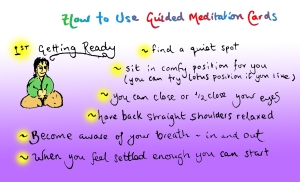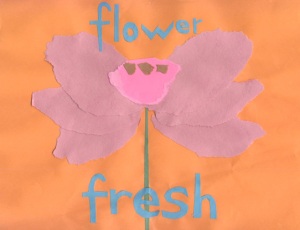Resources for Pebble Meditation
Click on the items below for the booklet of Thich Nhat Hanh teaching the complete practice of pebble meditation, the pebble meditation practice sheet, and colorful Pebble Meditation Cards that guide children through pebble meditation step by step ( you can cut them out and laminate them and then punch a hold in them and string them together).
pebble-meditation-cards-all-in-one2
pebble-meditation-practice-sheet
A summary of Pebble Meditation
We invite each child to sit up straight and relaxed and place four pebbles on the ground next to him or her. We invite three sounds of the bell. Then we invite each child to pick up the first pebble and say:
Breathing in, I see myself as a flower. Breathing out, I feel fresh. Flower, fresh (3 breaths)
The keywords we continue to practice silently are “flower, fresh” and we breathe together quietly for three in and out breaths, really being a flower and becoming fresh. The next three pebbles are:
Breathing in I see myself as a mountain, breathing out, I feel solid. Mountain, solid. (3 breaths)
Breathing in I see myself as still, clear water, breathing out, I reflect things as they really are. Clear water, reflecting. (3 breaths)
Breathing in I see myself as space, breathing out, I feel free. Space, free. (3 breaths)
End with three sounds of the bell. (Children are very capable of guiding this meditation for other children. They really enjoy inviting the bell for each other).
You can also invite the children to find more pebbles that can represent their mom and dad, friends, etc. and when they hold that pebble they breathe in and out and feel love and connection to that person. You can also lead a pebble meditation based on the six paramitas[1], the three jewels (Buddha, Dharma, and Sangha) or on the Four Immeasurables (loving kindness, compassion, joy and equanimity). The pebbles can be used to reflect on many different practices, it is up to you. So, for instance, with the Four Immeasurables, the children would take a first stone and write loving kindness on it. They would breathe mindfully and take a few minutes to reflect on what loving kindness is and how they can practice it in their daily life. They would then put it to one side, take a second pebble and reflect on the qualities of compassion, and so on.
[1] The six paramitas, or six perfected realizations, elements that help us cross from the shore of suffering and ignorance to the shore of liberation are: generosity, diligence, mindfulness trainings, inclusiveness, meditation and understanding.
Filed under: Pebble Meditation activities | Tagged: breathing in, breathing out, children, flower, free, fresh, kids, meditation, mountain, pebble meditation, pebbles, reflectin, solid, space, water | 1 Comment »





You must be logged in to post a comment.